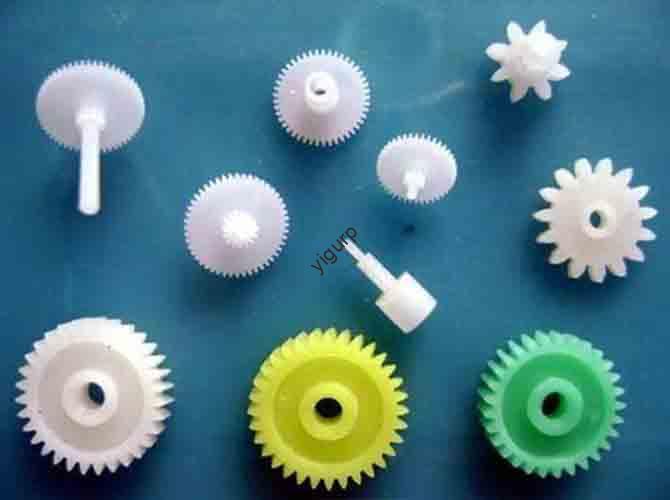No mundo da fabricação em ritmo acelerado de hoje, businesses and engineers constantly seek technologies that cut costs, boost flexibility, and enable innovation. One solution that has risen to prominence? 3D additive printing (também chamado 3D impressão or additive manufacturing, SOU). But what exactly is it, Como funciona, and can it solve your production challenges? Este guia quebra tudo o que você precisa saber.
1. What Is 3D Additive Printing? Definição & Princípios principais
No seu coração, 3D additive printing is a digital manufacturing process that builds three-dimensional objects by adding material layer by layer—unlike traditional “subtractive” methods (Por exemplo, Usinagem CNC) that carve or cut material from a solid block.
Key Principles of 3D Additive Printing
- Digitized Foundation: It starts with a 3D model created using CAD (Design auxiliado por computador) or CAM (Fabricação auxiliada por computador) programas. This file acts as a “blueprint” for every layer.
- Construção de camada por camada: The printer reads the CAD file, splits it into thousands of thin 2D layers, and deposits or fuses material (Por exemplo, plástico, metal, resina) one layer at a time—stacking them vertically to form the final object.
- No Molds Required: Ao contrário da moldagem ou fundição de injeção, there’s no need for expensive, time-consuming molds—making it ideal for rapid prototyping and small-batch runs.
2. 3D Additive Printing Technologies: Tipos & Suas aplicações
Not all 3D printing technologies are the same. They vary by energy source, material, and molding method. Below is a breakdown of the most common types and where they excel:
| Nome da tecnologia | Fonte de energia | Materiais comuns | Principais aplicações | Vantagens |
| Estereolitmicromografia (SLA) | Laser UV | Resina de fotopolímero | Protótipos, modelos dentários, joia | Altos detalhes (0.1mm accuracy), superfícies suaves |
| Fusão seletiva a laser (Slm) | Fiber Laser | Pós de metal (aço, alumínio) | Peças aeroespaciais, implantes médicos | Forte, durable metal components |
| Fusão de feixe de elétrons (EBM) | Electron Beam | Titânio, cobalt-chrome | Implantes ortopédicos, estruturas aeroespaciais | High-temperature processing, desperdício mínimo |
Casos de uso do mundo real
- Aeroespacial: Boeing uses SLM to print lightweight turbine parts, reducing fuel consumption by 15%.
- Médico: Hospitals create custom 3D-printed prosthetics (Por exemplo, hand implants) that fit patients perfectly—cutting wait times from months to weeks.
- Automotivo: Tesla uses 3D printing to prototype battery housings, slashing development time by 40%.
3. Vantagens vs.. Desafios: Can 3D Additive Printing Solve Your Problems?
To decide if 3D additive printing is right for you, let’s weigh its strengths against its current limitations:
Vantagens (How It Solves Key Pain Points)
- Complexity Without Extra Cost: Print intricate designs (Por exemplo, estruturas de treliça, canais internos) that are impossible with subtractive methods—no additional labor or tools needed.
- Alta utilização de material: Até 95% of material is used (vs.. 50-70% in CNC machining), reduzindo o desperdício e diminuindo os custos de material.
- Personalization at Scale: Create custom products (Por exemplo, dispositivos médicos personalizados, branded promotional items) without slowing down production.
- Prototipagem rápida: Turn a CAD design into a physical prototype in hours (não semanas), Acelerando ciclos de desenvolvimento de produtos.
Desafios (What to Consider)
- Velocidade de impressão: Large or thick parts can take hours or days to print—still slower than mass-production methods like injection molding.
- Limitações do material: Alguns materiais (Por exemplo, plásticos de alta temperatura, certain metals) are expensive or lack the strength needed for heavy-industry use.
- Cost-Benefit Balance: Para produção de alto volume (10,000+ unidades), traditional methods are still cheaper. 3D printing shines most for small batches or prototypes.
4. Tendências futuras: Where Is 3D Additive Printing Headed?
À medida que a tecnologia avança, these challenges are being addressed. Here’s what to expect in the next 3-5 anos:
- Faster Printing: Novas tecnologias (Por exemplo, Binder Jetting) are doubling print speeds, making 3D printing viable for more mid-volume applications.
- Wider Material Range: Companies are developing affordable, high-performance materials—including recycled plastics and bio-based resins.
- Finer Accuracy: Printers with 0.05mm resolution will become more accessible, opening doors for micro-manufacturing (Por exemplo, tiny medical sensors).
- Cross-Industry Expansion: Expect growth in fields like construction (3D-printed homes) and food (custom-shaped snacks or nutrient-specific meals).
5. Yigu Technology’s Perspective on 3D Additive Printing
Na tecnologia Yigu, nós vemos 3D additive printing Como uma pedra angular da fabricação inteligente. It aligns with our mission to help clients reduce waste, speed up innovation, and adapt to changing market demands. We’ve supported aerospace and medical clients in adopting SLM and SLA technologies—for example, helping a dental lab cut prosthetic production time by 50%. While challenges like speed remain, we’re investing in software integrations (Por exemplo, CAD-to-printer workflow tools) to make 3D printing more efficient. For businesses ready to move beyond traditional manufacturing, 3D additive printing isn’t just a trend—it’s a strategic tool.
Perguntas frequentes: Your Top 3D Additive Printing Questions Answered
- P: Is 3D additive printing suitable for mass production?
UM: Atualmente, no—for batches of 10,000+ unidades, Métodos tradicionais (Por exemplo, moldagem por injeção) are cheaper and faster. But it’s ideal for small batches (1-1,000 unidades) and personalized products.
- P: What materials can I use for 3D additive printing?
UM: Common options include plastics (PLA, Abs), metais (alumínio, titânio), resinas, and even specialty materials like carbon fiber or ceramic. The choice depends on your application (Por exemplo, resina para detalhes, metal for strength).
- P: How much does a 3D additive printer cost?
UM: Entry-level desktop printers start at \(200-\)500 (for hobbyists), while industrial-grade printers (Por exemplo, SLM para metal) variam de \(50,000 para \)1 milhão. The cost also includes materials and software.
